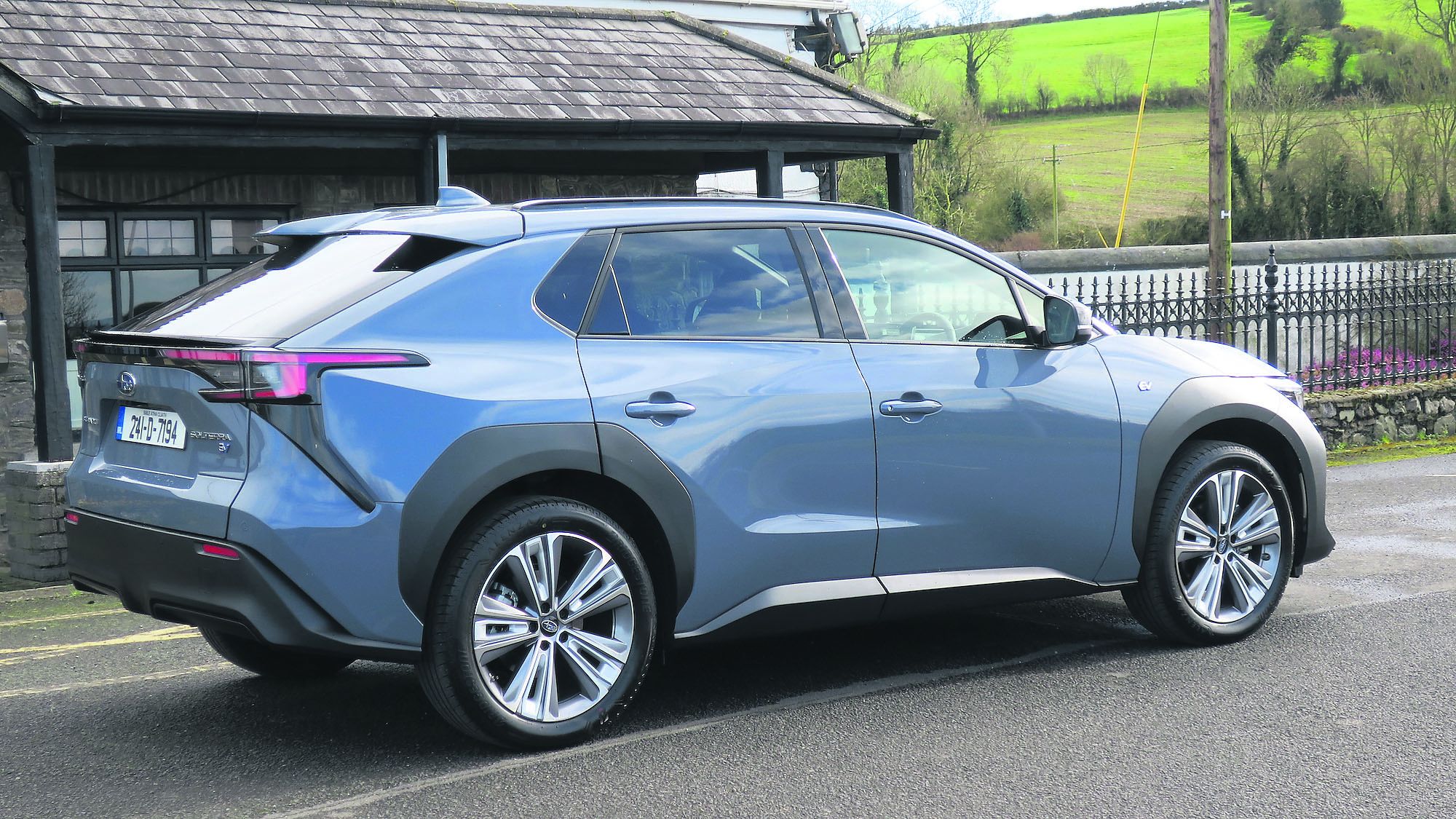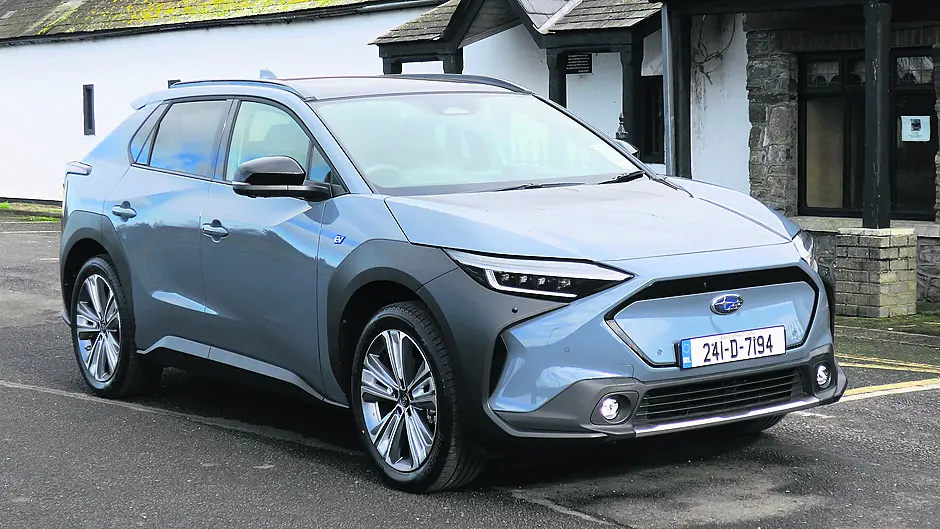BY BRIAN BYRNE
WHETHER badged as Toyota or with the Subaru co-parent’s name, the bZ4X or Solterra are both dramatic and striking to look at. Solterra is easier to say, and nobody asks you to explain it.
The two Japanese carmakers have a track record in joint ventures — the Toyota GT86 and Subaru BRZ sports cars are twins, and there’s also a strong ongoing partnership in advancing EV technology and cars connectivity.

For this first battery EV from either, both makers had more or less equal inputs into design and technology. On the final platform, Toyota developed the EV drivetrain and Subaru the all-wheel drive and collision safety. In format, the car is a C/D-segment crossover.
There are some detail differences, mostly up front where the apron and non-grille stylings are individual to each. It may be because the Subaru is the one I have taken for review first, but I rather prefer its face, especially with the badge placement taking the bare look off the front panel. There are a couple of minor divergencies in the rear lights, but you’d have to look closely for them.

The car’s wheelbase is long, though maybe the stylists got in the way of making the most of it. The bZ4X/Solterra is about the same size as a VW ID.4, but the German competitor gives slightly more leg and head room front and rear and has a bigger boot capacity. A Starship Enterprise take on dashboard design takes up space in the Subaru/Toyota car, and perhaps pushes the occupants further back than a simpler arrangement might have. That said, there’s actually plenty of room for a full set of five adults.
The interior style reflects the dramatic exterior. The driver instrumentation is forward and high, looked at from over the steering wheel a la current Peugeots, and close enough to the driver eye-line that it doesn’t require any head-up display. The rather massive ‘floating’ centre console offers bag storage underneath, and there are good spaces for stuff in it between the front seats. Switchgear is neat and well-labelled, and the driving information is shown simply and is easily understood. I had the sense that I wasn’t distracting as much back to the centre infotainment screen as I would have been if they were in line with each other as is the norm in most cars.

There are two powertrain options, depending on whether you go for the Subaru or the Toyota. The latter offers a choice between front wheel drive and AWD with a second motor, the Subaru only comes with the AWD. Which has a logic, as the brand is famous for its AWD vehicles and also provided that technology in this joint venture.
The AWD car in this instance has a somewhat shorter range than available in the single-motor version from Toyota, but that’s not unexpected, as they both use the same battery with a useable 64kWh. The Subaru spec suggests a possible range up to 465km, my car fully charged showed 308km, and an everyday driving estimate which I expect is quite accurate is 320km. The energy consumption averaged around 20kWh/100km, which bears that out.
I’ve grown to expect a level of heaviness in electric cars due to the weight of the batteries low down. It’s a credit to the Subaru and Toyota engineers who tuned the chassis so well that the Solterra felt relatively light and with nice tight steering on the road. There’s 215hp available and a 6.9s sprint to 100km/h is a respectable performance for a 2-tonne car, maybe even frisky.










